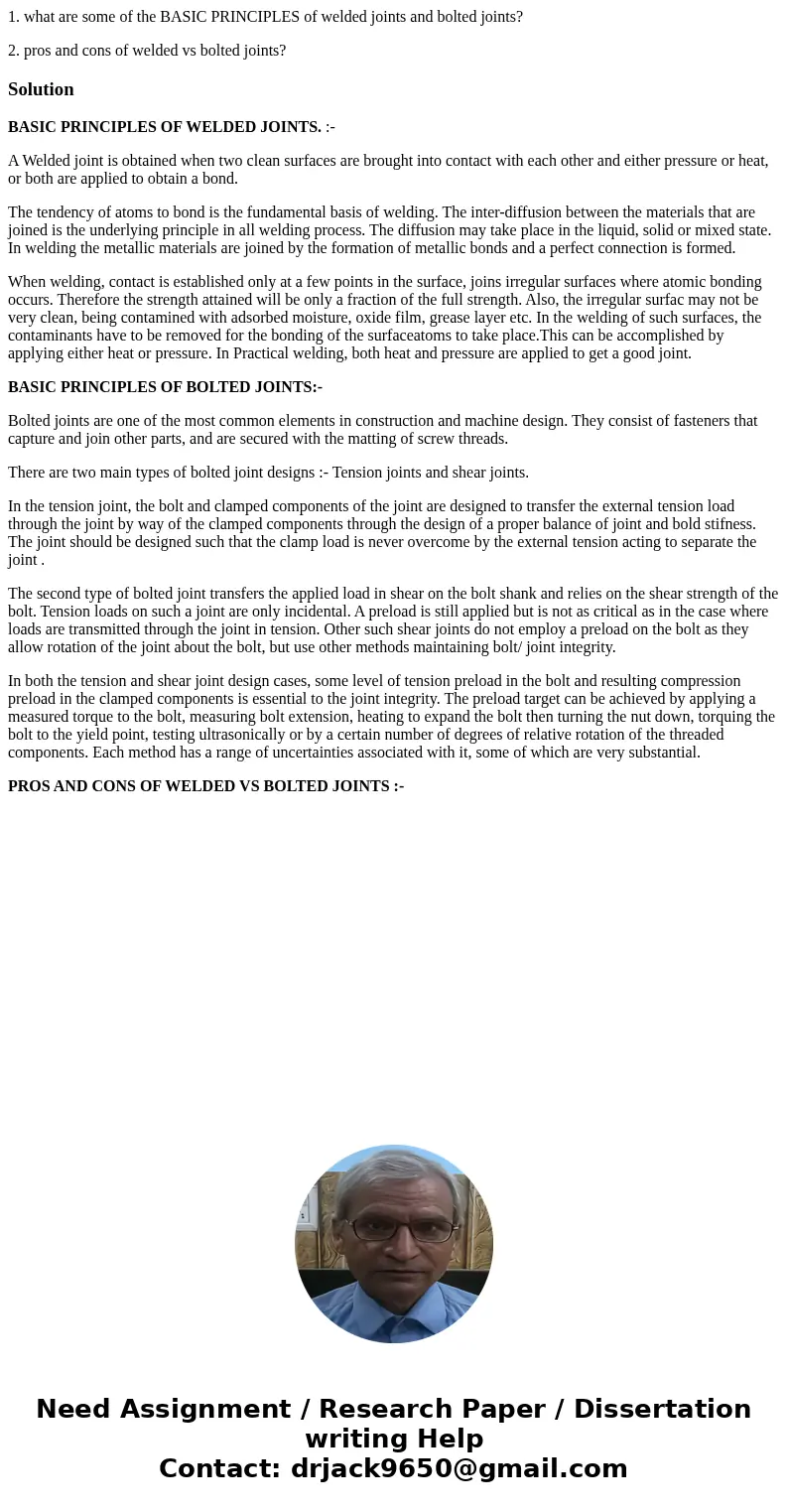1 what are some of the BASIC PRINCIPLES of welded joints and
1. what are some of the BASIC PRINCIPLES of welded joints and bolted joints?
2. pros and cons of welded vs bolted joints?
Solution
BASIC PRINCIPLES OF WELDED JOINTS. :-
A Welded joint is obtained when two clean surfaces are brought into contact with each other and either pressure or heat, or both are applied to obtain a bond.
The tendency of atoms to bond is the fundamental basis of welding. The inter-diffusion between the materials that are joined is the underlying principle in all welding process. The diffusion may take place in the liquid, solid or mixed state. In welding the metallic materials are joined by the formation of metallic bonds and a perfect connection is formed.
When welding, contact is established only at a few points in the surface, joins irregular surfaces where atomic bonding occurs. Therefore the strength attained will be only a fraction of the full strength. Also, the irregular surfac may not be very clean, being contamined with adsorbed moisture, oxide film, grease layer etc. In the welding of such surfaces, the contaminants have to be removed for the bonding of the surfaceatoms to take place.This can be accomplished by applying either heat or pressure. In Practical welding, both heat and pressure are applied to get a good joint.
BASIC PRINCIPLES OF BOLTED JOINTS:-
Bolted joints are one of the most common elements in construction and machine design. They consist of fasteners that capture and join other parts, and are secured with the matting of screw threads.
There are two main types of bolted joint designs :- Tension joints and shear joints.
In the tension joint, the bolt and clamped components of the joint are designed to transfer the external tension load through the joint by way of the clamped components through the design of a proper balance of joint and bold stifness. The joint should be designed such that the clamp load is never overcome by the external tension acting to separate the joint .
The second type of bolted joint transfers the applied load in shear on the bolt shank and relies on the shear strength of the bolt. Tension loads on such a joint are only incidental. A preload is still applied but is not as critical as in the case where loads are transmitted through the joint in tension. Other such shear joints do not employ a preload on the bolt as they allow rotation of the joint about the bolt, but use other methods maintaining bolt/ joint integrity.
In both the tension and shear joint design cases, some level of tension preload in the bolt and resulting compression preload in the clamped components is essential to the joint integrity. The preload target can be achieved by applying a measured torque to the bolt, measuring bolt extension, heating to expand the bolt then turning the nut down, torquing the bolt to the yield point, testing ultrasonically or by a certain number of degrees of relative rotation of the threaded components. Each method has a range of uncertainties associated with it, some of which are very substantial.
PROS AND CONS OF WELDED VS BOLTED JOINTS :-

 Homework Sourse
Homework Sourse